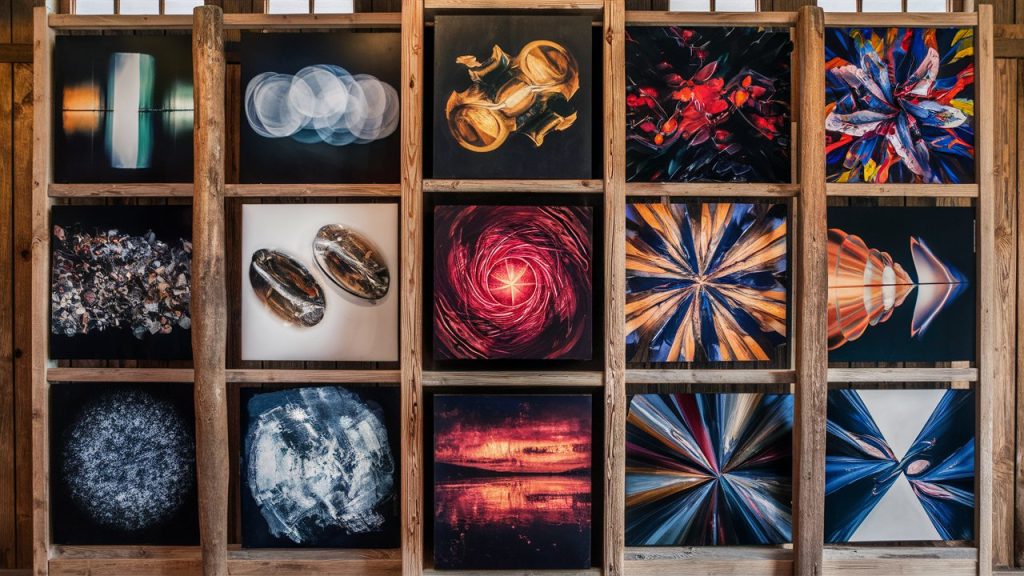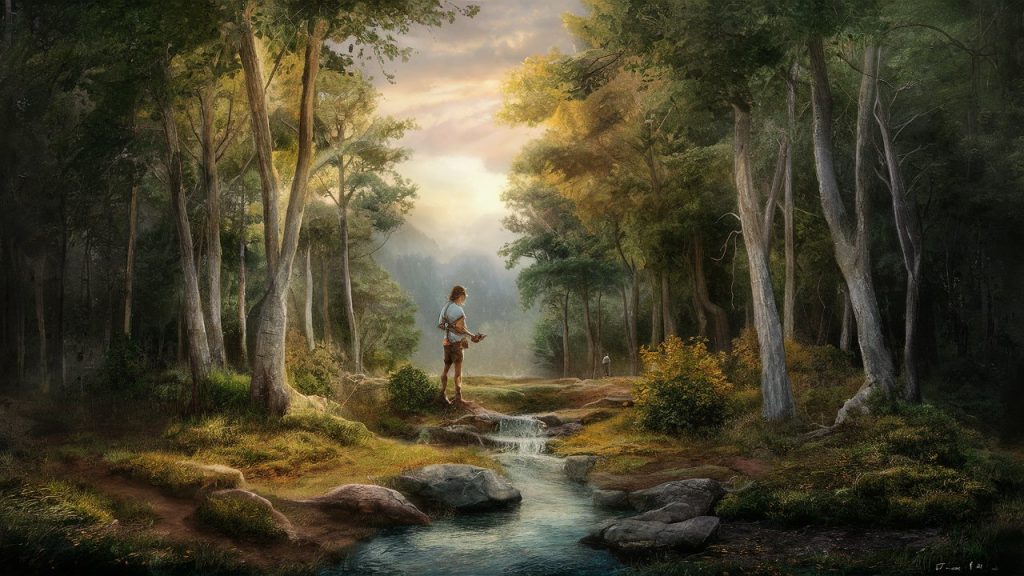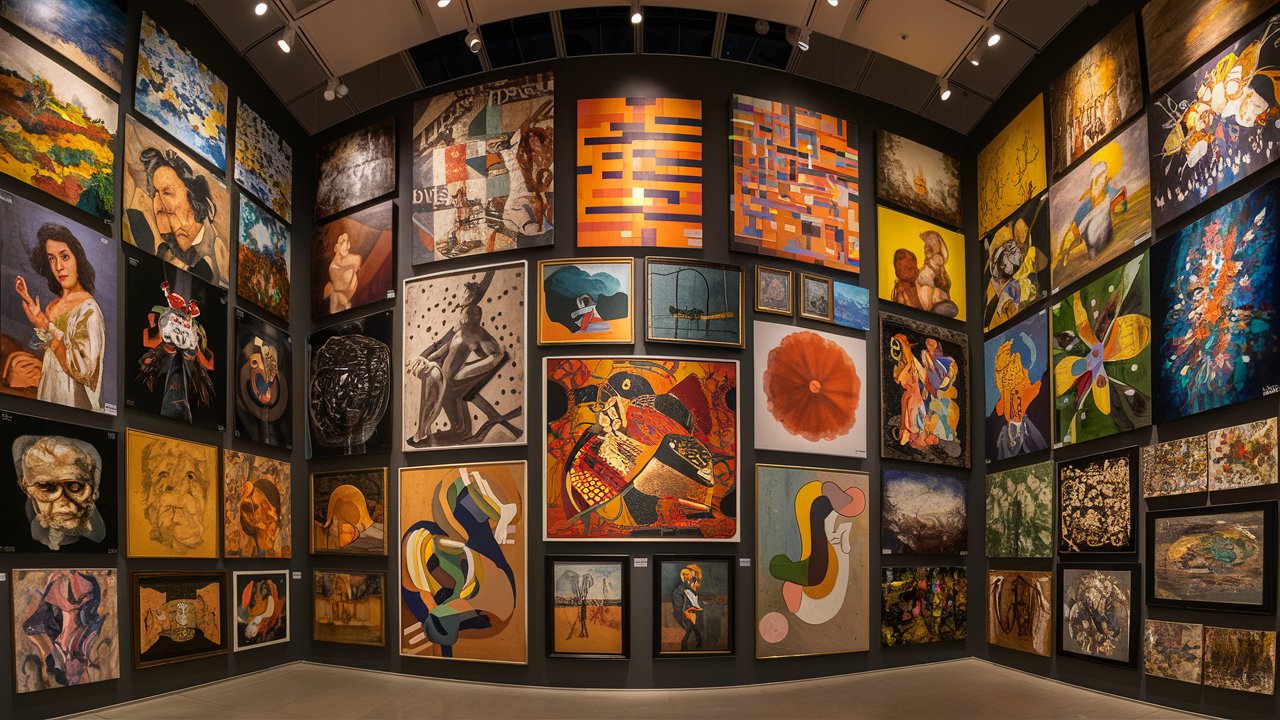Table of Contents
Exploring styles of art painting opens up a world of creativity and expression. From bold and modern to classic and intricate, each style offers unique techniques and trends that can transform your artwork. Whether you are an aspiring artist or a seasoned painter, understanding different painting styles can enhance your skills and broaden your artistic horizons. In this article, we’ll dive into various art painting styles, uncover their characteristics, and explore the techniques that make each one distinct.
Classic Styles of Art Painting

Classic art painting styles have stood the test of time, shaping how we view and create art. Here are some traditional styles that have influenced generations of artists.
Realism
Realism aims to represent subjects as they appear in real life, focusing on detail and accuracy. This style captures subjects’ true essence with high precision, often highlighting everyday scenes and objects. Realist paintings often showcase intricate details and lifelike textures, creating a sense of depth and authenticity.
Impressionism
Impressionism revolutionized art with its emphasis on light and colour. This style features quick, loose brushwork and vibrant colours to capture a moment’s impression rather than detailed accuracy. Impressionist paintings often depict outdoor scenes and everyday life, focusing on the effects of natural light and atmosphere.
Expressionism
Expressionism is all about conveying emotions and moods through art. This style uses bold colours, dramatic brushstrokes, and abstract forms to express inner feelings and psychological states. Expressionist paintings often have a raw, emotional quality that connects with viewers deeply.
Modern Styles of Art Painting
Modern styles of art painting reflect contemporary trends and innovations. They push the boundaries of traditional art forms and explore new ways of expression.
Abstract Art
Abstract art breaks away from realistic representation and focuses on shapes, colours, and forms to create a visual language. This style can range from geometric patterns to fluid, organic shapes. Abstract art encourages viewers to read the piece in light of their own feelings and experiences.
Pop Art
Pop art emerged in the 1950s and celebrates popular culture and everyday objects. This style uses bright colours, bold lines, and imagery from mass media to create visually striking pieces. Pop art often incorporates elements from advertisements, comic strips, and consumer products.
Surrealism
Surrealism explores the realm of dreams and the unconscious mind. This style features fantastical and often bizarre imagery, combining unexpected elements to create dreamlike scenes. Surrealist paintings challenge viewers’ perceptions and invite them to explore the depths of their imagination.
Contemporary Styles of Art Painting
Contemporary art painting styles reflect current trends and innovations in the art world. These styles often blend traditional techniques with new materials and concepts.
Digital Art
Digital art uses technology to create and manipulate artwork. Artists design and produce paintings using digital tools, such as graphic tablets and software. This style allows for various effects and techniques, from photo-realistic images to abstract compositions.
Mixed Media
Mixed media involves combining various materials and techniques in a single artwork. This style can include elements such as paint, collage, fabric, and found objects. Mixed media artists experiment with different textures and materials to create dynamic and multi-layered pieces.
Minimalism
Minimalism focuses on simplicity and clarity. This style uses a limited colour palette, clean lines, and geometric shapes to create artwork emphasizing essential forms and concepts. Minimalist paintings often convey a sense of calm and order through their simplicity.
Also read: Victorian Style Kitchen: Transform Your Space with Classic Elegance
Techniques in Different Painting Styles
Understanding the techniques used in various art painting styles can help you experiment with and master different styles. Here are some key techniques for popular painting styles.
Brushwork
Brushwork refers to the way paint is applied with a brush. Different styles use varying brushwork techniques to achieve specific effects. For example, Impressionist artists use loose, quick strokes to capture light and movement, while Realist painters apply detailed and controlled brushwork for precision.
Colour Theory
Colour theory involves using colour to create harmony, contrast, and mood in the artwork. Different painting styles utilize colour theory in unique ways. Abstract art often explores colour relationships and emotional impact, while Pop art uses bold, vibrant colours to make a statement.
Texture
Texture adds dimension and interest to paintings. Artists can create texture using techniques such as thick brushstrokes, layering, or adding materials. In styles like Expressionism and Mixed Media, texture plays a significant role in conveying emotions and enhancing visual appeal.
Choosing the Right Style for Your Artwork

Choosing the right art painting style for your work can greatly impact its effectiveness and appeal. Here are some tips to help you select the style that best suits your artistic vision.
Consider Your Subject Matter
Different painting styles are better suited for various subjects. For example, Realism is ideal for detailed and lifelike representations, while Abstract art can effectively express emotions or concepts. Consider your subject matter and choose a style that complements it.
Reflect on Your Style
Your style and preferences should guide your choice of painting style. Experiment with different styles to discover what resonates with you and aligns with your artistic goals. Your unique perspective will help you create authentic and engaging work.
Experiment and Evolve
Feel free to experiment with different styles of art painting. Trying out various styles can lead to discoveries and artistic growth. Allow yourself the freedom to explore and evolve as an artist, incorporating elements from different styles into your work.
Exploring styles of art painting offers a vibrant world of techniques and trends. From classic to contemporary, each style provides unique ways to express creativity and connect with viewers. Understanding and experimenting with different painting styles can enhance your artistic skills and create impactful artwork.

